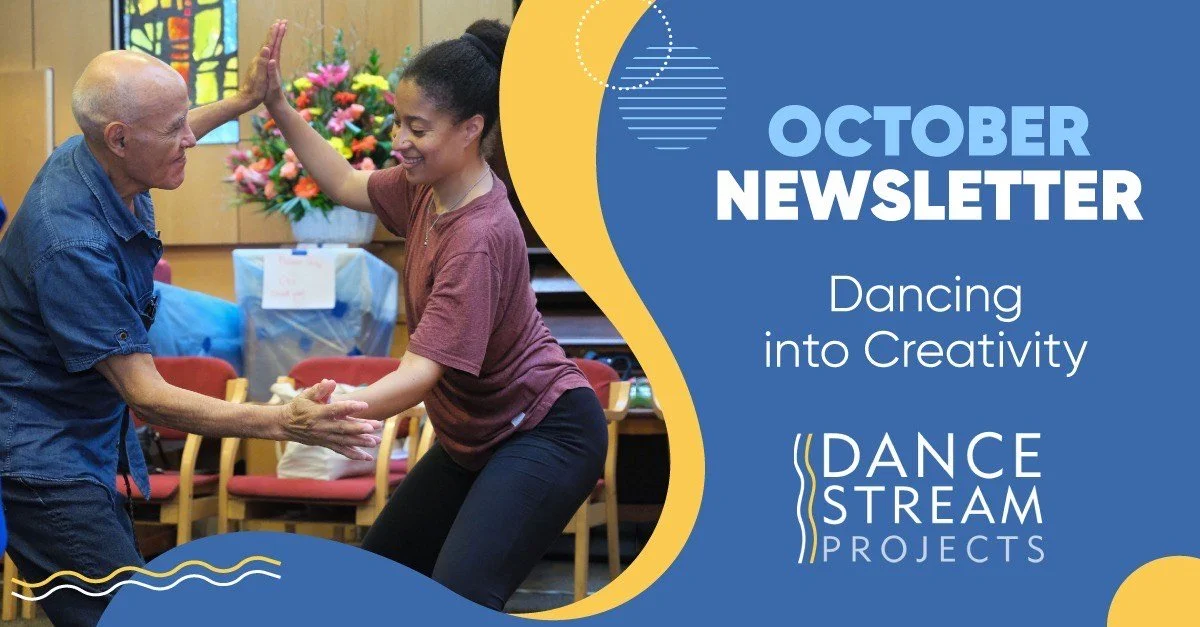October 2025 Edition: Dancing into Creativity
Dear friend,
For those of us in the northern hemisphere, we are heading into Autumn and Winter. Days get shorter and the nights longer and colder. On the east coast, where I live, the trees are resplendent in their reds, oranges and yellows even as we know that soon, they will be shed in preparation for the rest and dormancy of winter.
Although our natural surroundings and many of our traditions of this season invite us to slow down and gather in community, many of us find ourselves pulled into busy end of the year planning and work, which can introduce a sense of fatigue and a general feeling of our well-being being challenged.
I have been finding myself turning to the lessons I learn from our participants who have now formed a commitment and a habit of showing up for dance, to ensure that even as my own demands on my time seem to be endless, that I remember to also make time for myself to dance. When I do, the results are truly remarkable. Have you noticed this also? You would not be alone.
A recent meta-analysis of over 200 clinical trials found that dance had the largest effect size in reducing symptoms of depression, significantly more than other forms of exercise like walking, yoga, and strength training.
In speaking with participants our dance programs, we hear this reflected in their experience:
“Dancing not only helps your body, but it helps your whole demeanor. Dancing makes me happy more than any other activity.”
“The biggest impact was emotional. It opened us up. It can get heavy, you know. And this was the opposite. It’s joyful and that carries. We’ve taken it with us. It lasts throughout the week.”
Another benefit of dance, is fostering creativity, which not only positively impacts our mood and sense of agency, but also is remarkably helpful for our brain health.
Embracing a creative approach not only cultivates a sense of satisfaction and agency, but also may help our brains age well. New study led by Dr. Carlos Coronel-Oliveros and as part of Dr. Agustin Ibanez’s team in collaborations with the Jameel Arts & Health lab, illuminates how challenging ourselves with new creative engagement, be it dance, music or visual art, biologically changes our brains, so they are aging at a slower rate.
Also this month, dive into the theme of creativity and brain health by learning about the premiere of a new play, UnRavelled about a real life story of how the process of brain change due to dementia resulted in emergent creativity and expression through visual art. Tune into a conversation with Dr. Farina, on how collaborating with lived experience experts is challenging her own creativity and as a result, leading into innovative research in underserved areas of neuroscience, including young adult brain health.
Finally, check out virtual and in person classes this Fall/Winter and join us in boosting your own creativity through dance!
With joy and care,


